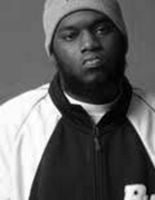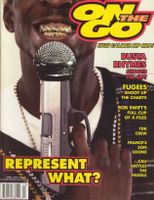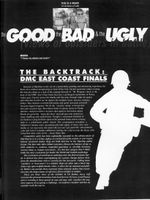state of the 'Nation'

treat it like a seminar
teach the bourgeois
and rock the boulevard
The NYU seminar on the significance of the Public Enemy album “It Takes a Nation of Millions to Hold Us Back” this past weekend was one of those great ideas that actually fulfilled it’s promise. It rekindled the feelings of that ecstatic moment in time that the album ‘created’ (not, necessarily, ‘captured’). I was only able to attend a few of the events (Friday’s screening and ‘Critics Panel’ and Saturday’s ‘Producer Panel’). Other blogs will likely have more complete accounting of the events judging from early posts on the subject so I will focus on a few comments that hit me center-mass.
THE CRITICS PANEL
Alan Light summed up the reason ‘Nation’ is often considered the best hip-hop album of all time if not one of the best albums PERIOD. He noted how rare it is to have an album capture/create the confluence of three cultural elements which I will paraphrase/title as: (1) A contemporary political statement, (2) Avant-garde aesthetics and (3) Cross demographic popularity.
(1) A contemporary political statement
Greg Tate’s description of the New York political climate at the time brought back memories of Black activists (from Sharpton to Maddox, Farrakhan to Souljah) as well as the extreme volatility as far as race relations were concerned. Armond White clarified that the record was less of a ‘document’ of those politically charged times and more of a ‘romantic’ vision of disparate voices. It made me realize that PE created a work of art implying a context or ‘convergence of ideas’ that never happened. Or at least were never resolved. White described the album’s power as a ‘moment of promise’ that included the potential for social activism generated by art. Robert Christgau boldly said the album failed on that promise. He was later refuted by audience members who said ‘Nation’ changed their political outlook and engagement. One person stated that the failure rests, if anywhere, on ‘us’ not on the point of inspiration created by PE. Christgau and Light conceded that although ‘Nation’ may have failed to create “5000 Political Leaders,” as Chuck proposed, it seems to have generated 5000 activists… at least! Tate quickly quipped that ‘Leaders’ often become more problematic anyway.
(2) Avant-garde aesthetic
Tate contextualized the cutting-edge ‘music’ that PE was bringing forth by describing a party that was brought to a stand still when ‘Rebel Without a Pause’ was first being played. Basically, even the funkiest residents of late-80’s hip-hop needed to adjust to the ‘dance-ability’ of Chuck’s voice/rap rather than dancing to the ‘beat’! White described the new formula as rhythm and blues plus noise and he emphasized the distinction of the elements of ‘rhythm’ and ‘blues’ rather than accepting it as a genre description. The noise, he recognized, had been utilized in other musical genres most notably in the realm of Punk and, Tate added, some Jazz. Clearly the mechanization of this ‘noise’ (via sampling however ‘crude’ or ‘off’ it might have been) was what set it apart from previous ‘instrumental noise’ excursions. (The concept of controlled chaos will receive more attention in my summary of the ‘Producers Panel’). And, it cannot be emphasized enough, PE combined their ‘noise’ elements with the full intention of creating ‘popular music’.
(3) Cross demographic popularity.
Alan Light says everyone was listening to ‘Nation’ at the time and he is almost correct. Jon Caramanica asked if the album was ‘inevitable’ which I felt was a question addressing it’s aesthetics as well as pop-culture impact. Christgau said it was not inevitable. He said albums by Eric B & Rakim or X-Clan could be described as inevitable meaning they were clearly developmental progress of the hip-hop vocabulary (be it in form or content) but they could clearly be tied to what had gone before. ‘Nation’ they all seemed to agree, was quite ‘alien’ in it’s aesthetics and the way it presented concepts in voice, sample and sound. But what is mind blowing is that the goal of PE was to reach the masses via it’s radical shift. Although Rick Rubin kept pressuring Chuck for recordings, the Bomb Squad strategized maximum effectiveness for every aspect of the album. Design, photography, marketing and image were as important as noise, resonance, and political statements (Which will receive more attention in my summary of the ‘Producers Panel’). It is no mistake that PE crossed demographics of street culture, college radicals, punk rockers and music critics. That was the intent! It’s amazing, however, that it worked. Vivien Goldman described the release of ‘Nation’ as an album meeting it’s moment and possibly defining the ‘maturation of a genre.’ It wasn’t inevitable… but timing CAN be everything!
A couple of personal notes…
In the Bay Area before ‘Nation’ when PE was an opening act on the Def Jam arena concerts it was amazing to see the 99% Black audience’s lack of interest in PE as they eagerly waited for LL and Whodini to take the stage. College radio was starting the PE push so inevitably the white critics were on the bandwagon before most black communities.
PE was absolutely a final piece of the puzzle to my move to New York. Although my brain had already been altered by the ‘Rebel Without a Pause’ b-side it was phenomenal to hear mixes of it on the Red Alert and Chuck Chillout KISS FM weekend shows. The song would be extended for unbelievably long periods for a mainstream radio station. And the streets of Bed-Stuy loved every squealing second of it. Oddly, the NYU critics panel suggested that ‘Bring the Noise’ was the mind-altering sound/moment. I will concede that ‘Noise’ was the ‘al dente’ serving of the raw ideas from ‘Rebel’ but Greg Tate was the only critic who recognized it (at least the night of the panel). I think it’s important that history shows the PE paradigm shift beginning on that street level DJ driven b-side… rather than on the ‘soundtrack for troubled rich white kids’ called ‘Less Than Zero.’
(Producers Panel comments coming soon).











